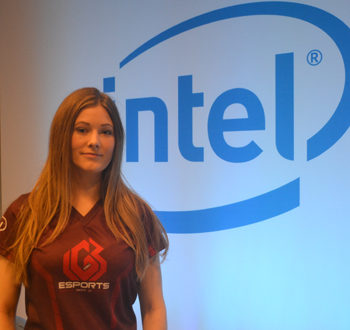The pro gaming eSports industry is now on the radar of most of the major PC/tech vendors, but it’s not as diverse as it could be.
While Intel is working hard to change this, with its AnyKey diversity initiative, female Counter-Strike tournaments and sponsorship of several female eSports teams, there’s still a lack of females at the top level.
One such player, Hege "Hedje" Botnen from LGB eSports (no, it doesn’t stand for lesbian/gay/bisexual), believes one of the reasons is the result of a marketing decision made several decades ago.
"It all started when console games were coming out around the ‘80s," she told PCR at Intel’s recent Intel Extreme Masters eSports event in Katowice, Poland. "They were marketed as electronics, but at some point Nintendo decided to take it out of electronics and put it in the toy section.
"The toy section at that time was divided into boys and girls’ sections. They decided to market video games towards boys. So the problem we’re seeing today is such a difference in girls and boys. It boils back to that decision they made in the ‘80s to market video games to boys. This has only changed recently."
Hege went on: "When you only market games towards guys, you’re missing out on 50 per cent of the marke. It’s kind of ridiculous.
"Also, the perception that’s there’s more men playing games than females is also wrong. It’s actually 50/50. The only difference is women tend to play more on mobile games – if we can get them over to consoles and PC games, it’s possible. But it’s kind of a shame that there’s still ripples in the water from something which happened such a long time ago."
In recent years, a campaign for gender-neutral toys and toy categorisation within retail has gained a lot of traction, and recently won an award for its efforts.
Lee Machen, Intel’s developer relations director, hopes that putting female eSports role models in the limelight, this can encourage more women and other eSports minorities to emerge, and that the bigger teams will sign female players in the future to create mixed teams.
eSports Industry Awards to hit London November 21st
"We want to create role models and improve diversity in eSports," he said.
"I hope that by being more proactive about it and sponsoring women’s teams and bringing them to events like this, we’ll be able to spur more interest from women’s teams and provide role models to girls who might want to play competitively someday.
"I don’t think we’re going to force any mixed teams to happen. I hope that by shining a spotlight on women’s players through events like the Intel Challenge, that maybe a team today who are primarily men and need a new player, might try to sign someone from one of the women’s teams who really looks promising."
Hege added: "In Sweden, they have come very far in treating eSports as a real sport and catching people at a younger age. Last summer, there was an eSports summer camp – and we were there to show a lot of young players from an early age that there are professional women’s teams.
"In Romania, there was a girl maybe 13 years old, who was fascinated by everything. She loves playing games and said she wants to be a pro gamer, that’s her dream. There are more and more of those girls emerging, and to see what we’re doing is inspiring to them."
Read the full interview with Hege Botnen and Lee Machen in the next issue of PCR
More Intel Extreme Masters eSports content from PCR
 PCR Tech and IT retail, distribution and vendor news
PCR Tech and IT retail, distribution and vendor news



